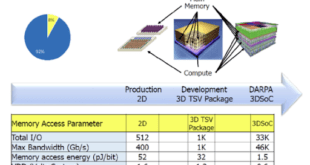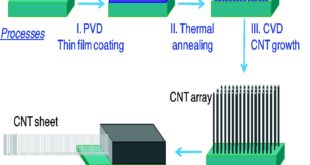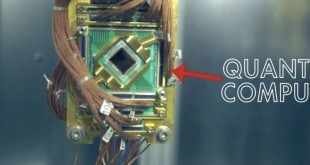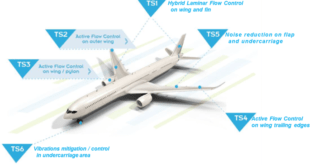Deployed electronic systems increasingly require advanced processing capabilities, however the time and power required to access system memory – commonly referred to as the “memory bottleneck” – takes a significant toll on their performance. Any substantial improvement in electronic system performance will require a radical reduction in memory access time …
Read More »3D heterogeneous integration enable higher performance and low cost IoT, military RADAR, communications, imaging and sensing
Electronics are deeply embedded into the fabric of our society, changing the way we live, work and play while bringing new efficiencies to our global lifestyles, industries, and businesses. We are in the era of the digital economy and ubiquitous connectivity, and the market forces driving data and systems growth …
Read More »Carbon Nanotubes assembly, manufacturing integration processes usher carbon revolution for post silicon future
Carbon nanotubes (CNTs) are hollow cylindrical tubes formed by rolling a sheet of carbon atoms arranged in a hexagonal ring, as in a sheet of graphite, either in monolayer (single-walled nanotube, SWCNT) or multilayer (multi-walled nanotube, MWCNT) form. CNTs exhibit different electronic properties based on the way these graphene …
Read More »Product Transition and handover
The APM Body of Knowledge 6th edition defines handover as: “The point in the life cycle where deliverables are handed over to the sponsor and users.” . It might also be the end of the defects and liability period (essentially the first year’s warranty period of a building). It could …
Read More »Bioelectronics promise more sustainable, biologically produced products including Touch Sensors and Printed Electronics
Bioelectronics is the discipline resulting from the convergence of biology and electronics and it has the potential to significantly impact many areas important to the nation’s economy and well-being, including healthcare and medicine, homeland security, forensics, and protecting the environment and the food supply. It is being fostered by the …
Read More »The Synthetic biology infrastructure will drive development of cloud based synthetic biology “apps”, and biology-as-a-service
Synthetic biology is the application of science, technology and engineering to facilitate and accelerate the design, manufacture and/or modification of genetic materials in living organisms, as defined by the European Commission. It envisions the redesign of natural biological systems for greater efficiency, as well as create new organisms as well as …
Read More »Requirements development and analysis, Requirements Verification & Validation critical for Military acquisition
Requirements development is paramount to successful acquisition outcomes. Properly developed requirements enhance competition, ensure sound business strategies, provide the basis for realistic Government estimates, mitigate requirements creep, and help the Department to meet critical acquisition timelines. Systems Analysis of weapon system requirements projected by services may contribute immensely in reducing …
Read More »Aviation electronic standards including ARINC, DO 254, DO160 and MIL-STD-704 make flying more reliable, predictable, and safer.
The growing demand for high-efficiency fighter aircraft, commercial airbuses and the ever-evolving Aerospace and Defense requirements are driving the demand for next-gen airborne electronics systems. Air transportation agencies and aviation OEMs across the globe have been striving to build next-generation Airborne electronics systems to make flying more reliable, predictable, and …
Read More »Mass production of Quantum Computers enabled by Silicon and Glass quantum chips
The quantum computing market is projected to reach $65 billion by 2030, a hot topic for investors and scientists alike because of its potential to solve incomprehensibly complex problems. Quantum computer development has been dominated by some of the biggest and most established IT players, in particular, Google, Intel, …
Read More »Active Flow control for Stealth Aircrafts and Drones
Combat aircraft have continued to evolve since the introduction of the jet engine during World War II, exemplified by the F-16, first flown in 1974, the F-22 (1990), and the F-35 (2001). These aircraft are characterized by a traditional wing/body/tail arrangement, are all commanded by an on-board pilot, and are …
Read More » International Defense Security & Technology Your trusted Source for News, Research and Analysis
International Defense Security & Technology Your trusted Source for News, Research and Analysis








